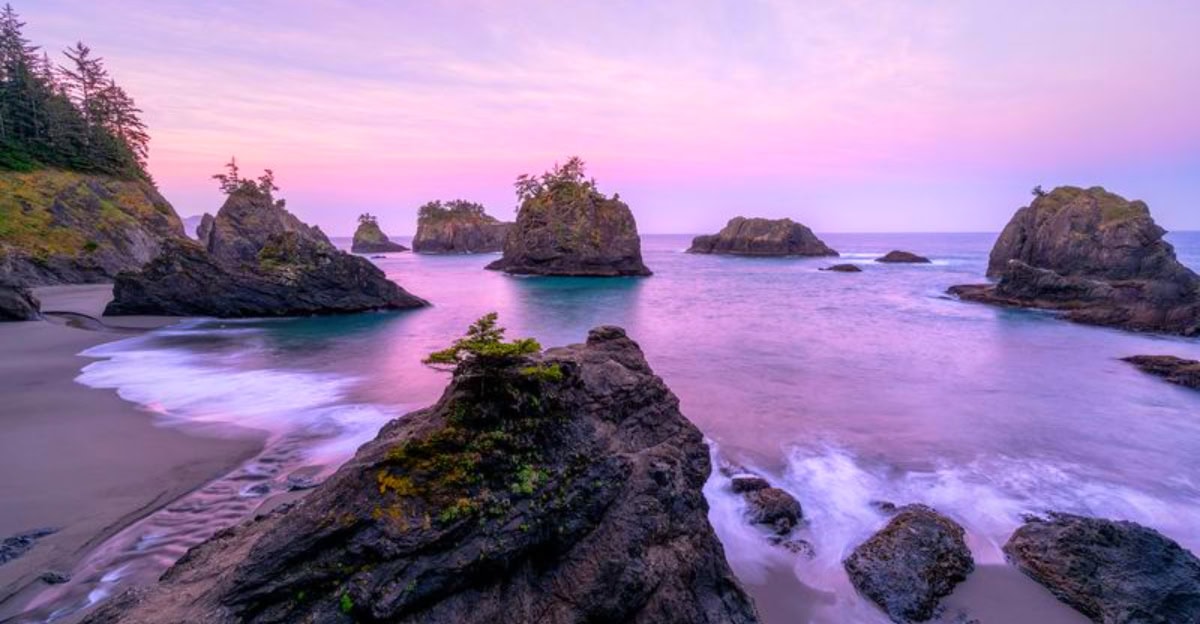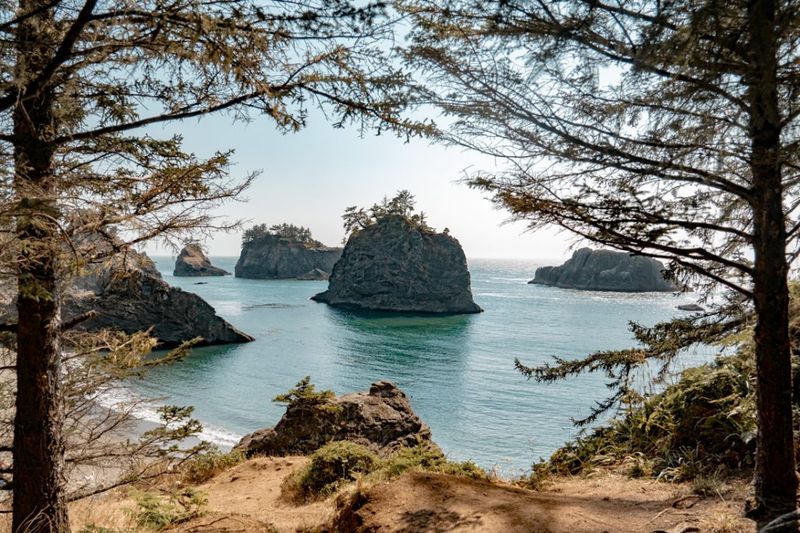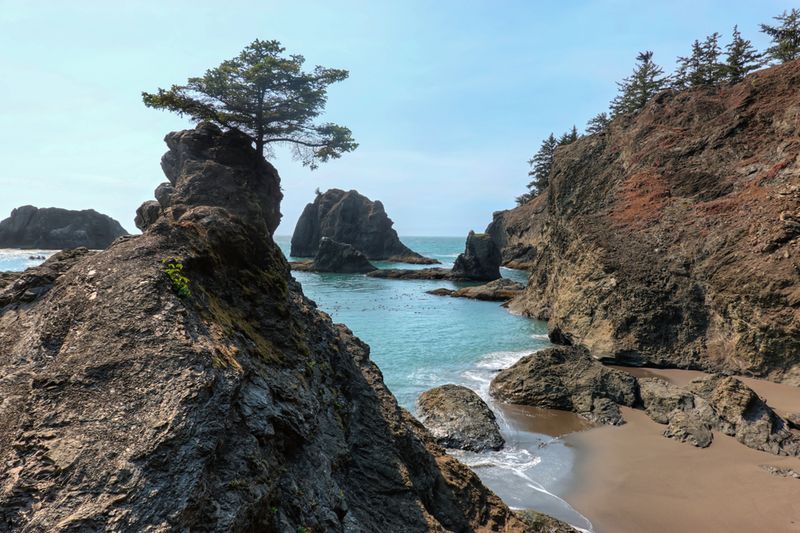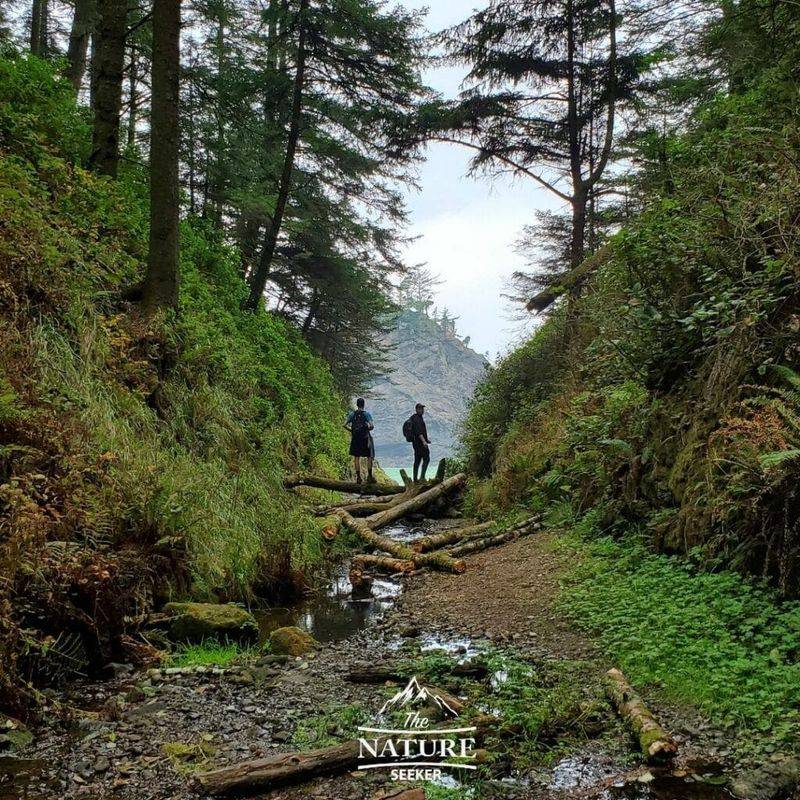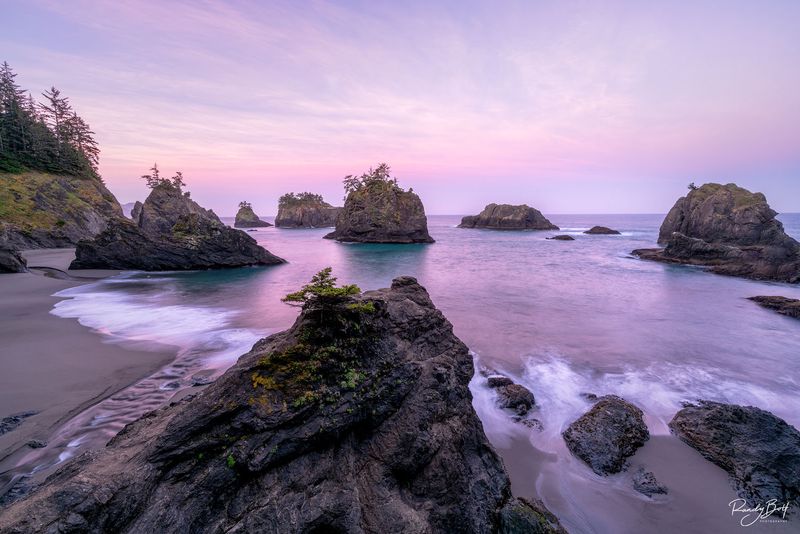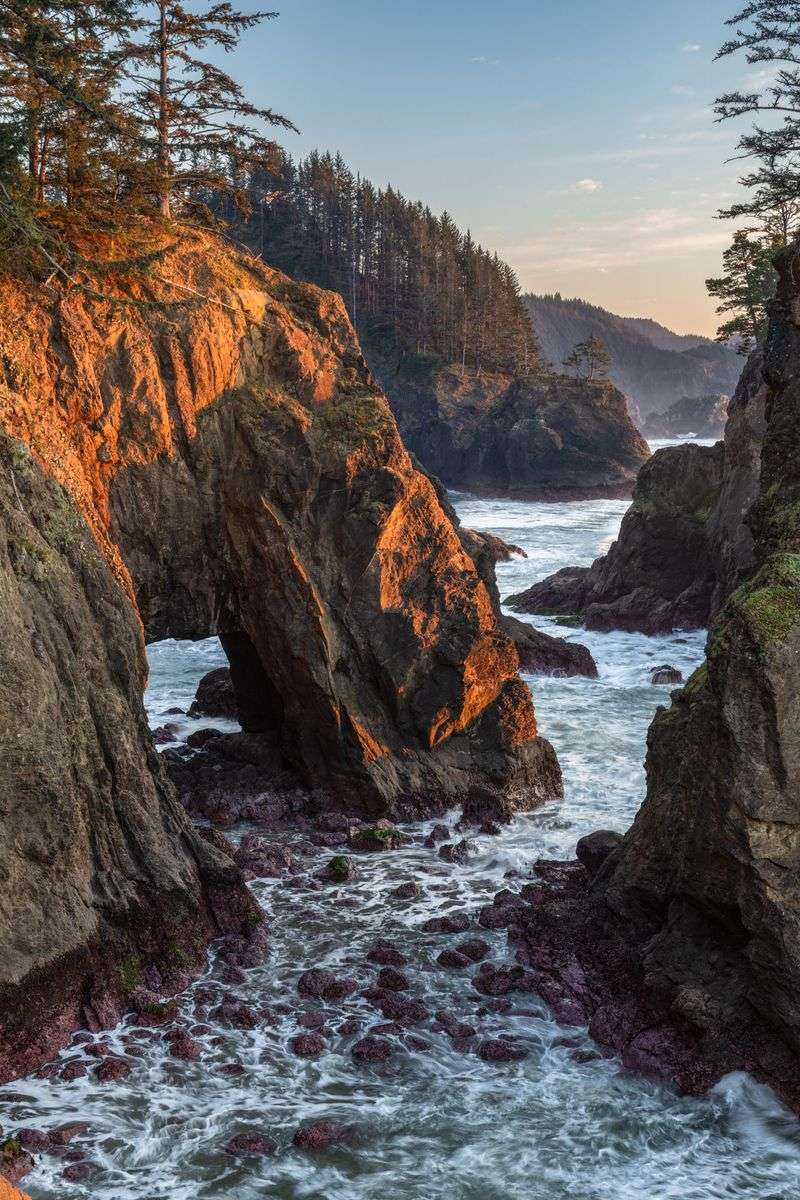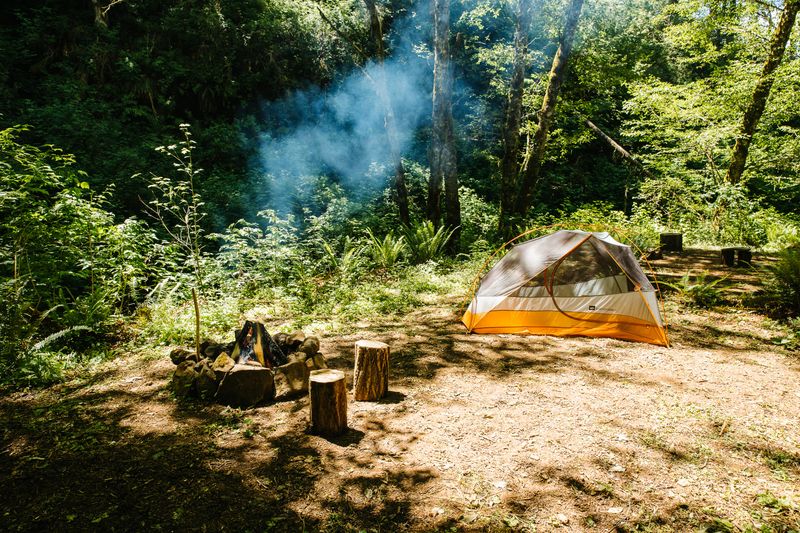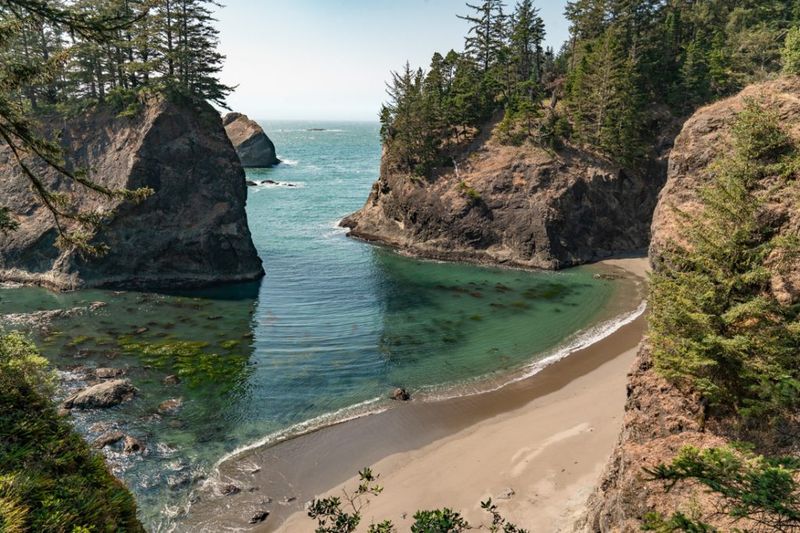Hidden along Oregon’s rugged coastline lies a beach so stunning that locals would rather keep it their little secret. Secret Beach, tucked away in the Samuel H. Boardman State Scenic Corridor, offers dramatic sea stacks, pristine sand, and breathtaking views without the crowds. While we’re sharing this hidden gem with you, we promise the locals won’t mind too much.
1. Where This Hidden Paradise Actually Lives
Secret Beach calls the Samuel H. Boardman State Scenic Corridor home, nestled between Brookings and Gold Beach along Highway 101. This 12-mile stretch of Oregon coastline showcases some of the state’s most dramatic scenery.
The corridor stays open year-round for day use, making it accessible whenever wanderlust strikes. Multiple viewpoints and pocket beaches dot this scenic route, but Secret Beach remains the crown jewel.
Finding this corridor is easy since it runs right alongside U.S. 101, Oregon’s famous coastal highway that connects countless coastal treasures.
2. Why Everyone Calls It The Secret Beach
No flashy billboard or visitor center marks this special spot – just a small gravel parking area that many drivers zip right past. The trailhead sits roughly one-third of a mile south of milepost 345, easy to miss if you’re not looking carefully.
Once you park, a three-quarter-mile trail winds down to the sandy shoreline below. The modest entrance keeps casual tourists moving along Highway 101 toward more obvious attractions.
This low-key approach means only determined explorers and locals in-the-know make the effort to visit this coastal treasure.
3. The Jaw-Dropping Scene Waiting Below
Towering sea stacks rise from churning waters like ancient sentinels guarding this secluded cove. Forested cliffs frame the beach, creating a natural amphitheater of Douglas firs and shore pines.
The Boardman corridor’s signature look comes alive here – craggy bluffs meet secluded sand while offshore rock formations create constantly changing silhouettes. Each tide brings new compositions of stone, water, and sky.
Photographers and nature lovers find endless inspiration in this ever-changing canvas where Pacific storms have sculpted masterpieces from solid rock over countless centuries.
4. Timing Your Visit With Ocean Rhythms
Low tide transforms this beach into an explorer’s playground, revealing tide pools, sea caves, and wider stretches of walkable sand. High tide can completely cut off access to certain areas, sometimes trapping unwary visitors.
Smart beachcombers check Port Orford tide predictions before heading out, since this station provides the most accurate readings for this coastal section. Tide apps and NOAA websites offer reliable forecasting.
Planning around low tide also means safer rock hopping and better chances of spotting marine life in newly exposed tide pools.
5. Trail Challenges That Separate Casual Visitors
Sturdy hiking boots beat flip-flops hands down on this steep, sometimes slippery descent through coastal forest. Tree roots create natural steps, but they can turn treacherous when wet from Oregon’s frequent coastal mists.
Several scrambly sections require careful footing and basic climbing skills over moss-covered rocks and fallen logs. The trail demands respect, especially on the return uphill journey.
Experienced hikers on AllTrails consistently warn newcomers about the steep grades and recommend knowing your physical limits before attempting this adventure down to the sand.
6. Ocean Safety Rules Locals Never Ignore
Sneaker waves earn their name by catching beach visitors completely off guard, sweeping in much farther and faster than expected. Oregon’s state park service issues constant warnings about these unpredictable giants.
Staying off wet rocks and avoiding narrow beaches during incoming tides can literally save your life. The ocean demands constant respect and attention from anyone exploring this rugged coastline.
Smart visitors keep one eye on the water at all times, positioning themselves with clear escape routes to higher ground when waves start growing larger.
7. Perfect Timing For Peaceful Beach Moments
Early morning light creates magical conditions as fog lifts from sea stacks and wildlife starts stirring in tide pools. Late afternoon brings golden hour photography opportunities without midday crowds.
Shoulder seasons like late fall and early spring offer the best combination of decent weather and fewer visitors. The Boardman corridor has no entrance gates, so timing your arrival strategically pays off.
Avoiding midday visits helps with both parking availability and elbow room on the sand, since most tourists stick to conventional sightseeing hours along Highway 101.
8. Backup Plans When Your Secret Spot Gets Busy
Natural Bridges viewpoint sits just minutes away, offering spectacular arch formations and easier access for less adventurous travelers. Arch Rock provides another stunning alternative with dramatic stone windows carved by centuries of waves.
Whaleshead Beach and House Rock viewpoints round out the nearby options, each showcasing signature Boardman corridor scenery. These backup locations often prove just as memorable as the original destination.
Having multiple stops planned means never wasting a trip to this incredible stretch of Oregon coastline, even when parking fills up at your first choice.
9. Easy base for the night
Camping near this secluded beach requires advance planning since traditional campgrounds stay booked months ahead. Local families often recommend dispersed camping areas about fifteen minutes inland where you can pitch a tent legally and safely.
These spots offer basic amenities like fire rings and vault toilets without the crowded atmosphere of developed campgrounds. Morning fog rolls in around dawn, creating mystical views as you sip coffee before heading to the shore.
Pack extra blankets because coastal temperatures drop significantly after sunset, even during summer months.
10. What not to expect
Forget about finding fancy restrooms, snack bars, or lifeguards at this pristine location. The beach remains completely undeveloped, which means bringing your own water, food, and emergency supplies becomes absolutely essential for any visit.
Cell phone service cuts out completely once you reach the shoreline, so downloading offline maps beforehand saves potential headaches. Parking consists of a small dirt pullout that fits maybe six cars on busy days.
Weather changes rapidly here, turning sunny skies into thick fog within minutes, so pack layers regardless of morning conditions.
